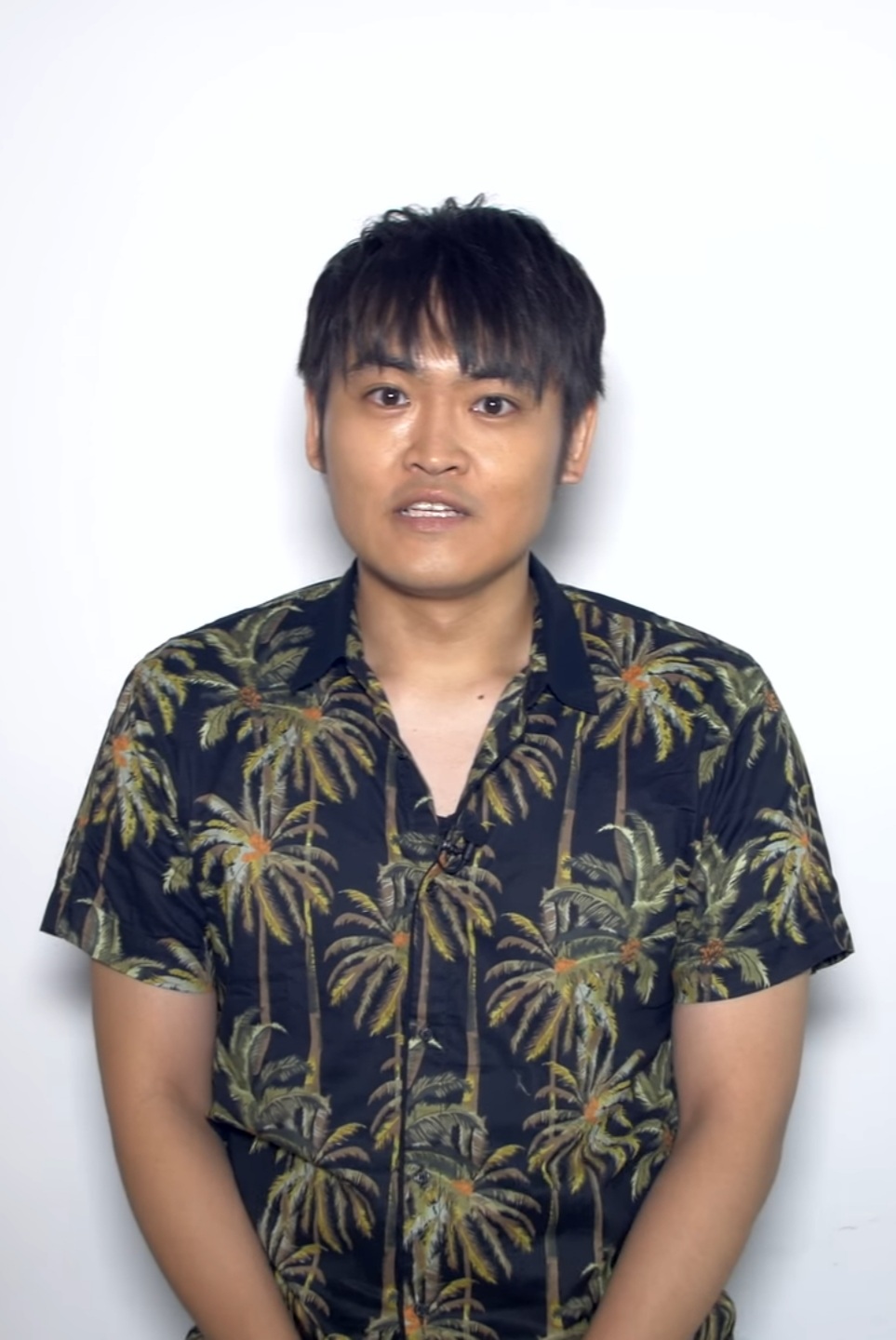|
Sarada Uchiha
is a fictional character in the ''Naruto'' manga by Masashi Kishimoto. Introduced in the last chapter of the manga, she becomes the protagonist of the spin-off '' Naruto: The Seventh Hokage and the Scarlet Spring'' (2015). A young ninja in training, Sarada is the daughter of Sasuke and Sakura Uchiha. Her character is first explored in the film '' Boruto: Naruto the Movie'' (2015), where she has become a low-ranking ninja (Genin) from the village of Konohagakure and dreams of becoming its leader, the Hokage. Sarada also appears as a main character in Ukyō Kodachi's manga series '' Boruto: Naruto Next Generations'' (2016) and its anime adaptation, which show her interactions with her family and with her future teammates, Boruto Uzumaki and Mitsuki, along with whom she is led by Konohamaru Sarutobi. Kishimoto felt pressure when he created Sarada because he thought he lacked experience in drawing female characters. Kishimoto also wanted to convey Sarada's relationship with h ... [...More Info...] [...Related Items...] OR: [Wikipedia] [Google] [Baidu] |
Naruto
''Naruto'' is a Japanese manga series written and illustrated by Masashi Kishimoto. It tells the story of Naruto Uzumaki, a young ninja who seeks recognition from his peers and dreams of becoming the Hokage, the leader of his village. The story is told in two parts – the first set in Naruto's pre-teen years, and the second in his teens. The series is based on two one-shot manga by Kishimoto: ''Karakuri'' (1995), which earned Kishimoto an honorable mention in Shueisha's monthly ''Hop Step Award'' the following year, and ''Naruto'' (1997). ''Naruto'' was serialized in Shueisha's magazine, '' Weekly Shōnen Jump'' from 1999 to 2014, and released in ''tankōbon'' (book) form in 72 volumes. The manga was adapted into an anime television series produced by Pierrot and Aniplex, which broadcast 220 episodes in Japan from 2002 to 2007; the English dub of the series aired on Cartoon Network and YTV from 2005 to 2009. '' Naruto: Shippuden'', a sequel to the original serie ... [...More Info...] [...Related Items...] OR: [Wikipedia] [Google] [Baidu] |
Ninja
A or was a covert agent or mercenary in feudal Japan. The functions of a ninja included reconnaissance, espionage, infiltration, deception, ambush, bodyguarding and their fighting skills in martial arts, including ninjutsu.Kawakami, pp. 21–22 Their covert methods of waging irregular warfare were deemed dishonorable and beneath the honor of the samurai. Though ''shinobi'' proper, as specially trained spies and mercenaries, appeared in the 15th century during the Sengoku period, antecedents may have existed as early as the 12th century. In the unrest of the Sengoku period, mercenaries and spies for hire became active in Iga Province and the adjacent area around the village of Kōga. It is from these areas that much of the knowledge regarding the ninja is drawn. Following the unification of Japan under the Tokugawa shogunate in the 17th century, the ninja faded into obscurity. A number of ''shinobi'' manuals, often based on Chinese military philosophy, were written i ... [...More Info...] [...Related Items...] OR: [Wikipedia] [Google] [Baidu] |
Voice Acting
Voice acting is the art of performing voice-overs to present a character or provide information to an audience. Performers are called voice actors/actresses, voice artists, dubbing artists, voice talent, voice-over artists, or voice-over talent. Voice acting is recognised as a specialized dramatic profession in the United Kingdom, primarily due to BBC broadcasts of radio drama production. Examples of voice work include animated, off-stage, off-screen or non-visible characters in various works such as feature films, dubbed foreign-language films, animated films, anime, television shows, video games, cartoons, documentaries, commercials, audiobooks, radio dramas and comedies, amusement rides, theater productions, puppet shows and audio games. Voice actors are also heard through pre-recorded and automated announcements that are a part of everyday modern life in areas such as shops, elevators, waiting rooms and public transport. The role of a voice actor may involve singin ... [...More Info...] [...Related Items...] OR: [Wikipedia] [Google] [Baidu] |
Scenarioart
Scenarioart (シナリオアート, Shinarioāto) is a three-member pop-rock Japanese band founded in 2009 by guitarist Kōsuke Hayashi and bassist Takahisa Yamashita, with drummer Kumiko Hattori joining in 2011. The band released the single "White Raincoat Man" in April 2013, which reached 2nd place on the Oricon Weekly Indies Chart, whereafter the EP ''- DRAMATICS -'' was released in June the same year on the band's independent label ES FICTION MUSIC. The band was signed to the Kioon Music record label in 2014, where they remained until 2018, when they decided to produce independently on their own label es.faction. As of 2020, they have released 3 full length albums, 5 EPs, and 6 singles. Their songs have been used in multiple anime series, including the ending themes of '' Boruto: Naruto Next Generations'', ''Subete ga F ni Naru'', and ''The Tatami Galaxy is a 2004 Japanese varsity novel written by Tomihiko Morimi and published by Ohta Publishing. Its first-person na ... [...More Info...] [...Related Items...] OR: [Wikipedia] [Google] [Baidu] |
List Of Naruto Chapters (Part I)
The ''Naruto'' manga is written by Masashi Kishimoto and is published by Shueisha in the ''Weekly Shōnen Jump'' magazine, in twenty-page installments. Part I follows the title character named Naruto Uzumaki, an energetic and determined pre-teen ninja with superhuman ninjutsu abilities, who is the host of the Nine-Tailed Fox that was sealed inside of him 12 years ago before the series began, seeks recognition from his peers, and dreams to become the Hokage, the strongest ninja leader of the Hidden Leaf Village in order to gain respect from the villagers. The first chapter of ''Naruto'' was published in issue 43 from 1999. continuing to more than seven hundred chapters in all. The ''Naruto'' manga is serialized in North America by Viz Media in their manga anthology magazine '' Shonen Jump'', with the first chapter of the English adaptation published in the January 2003 issue. The ''Naruto'' manga is split in two parts to divide the storyline; the first part, Part I, covers the first ... [...More Info...] [...Related Items...] OR: [Wikipedia] [Google] [Baidu] |
Shueisha
(lit. "Gathering of Intellect Publishing Co., Ltd.") is a Japanese company headquartered in Chiyoda, Tokyo, Japan. The company was established in 1925 as the entertainment-related publishing division of Japanese publisher Shogakukan. The following year, Shueisha became a separate, independent company. Manga magazines published by Shueisha include the '' Jump'' magazine line, which includes shonen magazines ''Weekly Shōnen Jump'', '' Jump SQ'', and ''V Jump'', and seinen magazines '' Weekly Young Jump'', '' Grand Jump'' and '' Ultra Jump''. They also publish other magazines, including '' Non-no''. Shueisha, along with Shogakukan, owns Viz Media, which publishes manga from all three companies in North America. History In 1925, Shueisha was created by major publishing company Shogakukan (founded in 1922). became the first novel published by Shueisha in collaboration with Shogakukan—the temporary home of Shueisha. In 1927, two novels titled ''Danshi Ehon'', and ''Joshi E ... [...More Info...] [...Related Items...] OR: [Wikipedia] [Google] [Baidu] |
Square Enix
is a Japanese multinational holding company, production enterprise and entertainment conglomerate, best known for its ''Final Fantasy'', ''Dragon Quest'', '' Star Ocean'' and ''Kingdom Hearts'' role-playing video game franchises, among numerous others. Outside of video game publishing and development, it is also in the business of merchandise, arcade facilities, and manga publication under its Gangan Comics brand. The original Square Enix Co., Ltd. was formed in April 2003 from a merger between Square and Enix, with the latter as the surviving company. Each share of Square's common stock was exchanged for 0.85 shares of Enix's common stock. At the time, 80% of Square Enix staff were made up of former Square employees. As part of the merger, former Square president Yoichi Wada was appointed the president of the new corporation, while former Enix president Keiji Honda was named vice president. Yasuhiro Fukushima, the largest shareholder of the combined corporation and founde ... [...More Info...] [...Related Items...] OR: [Wikipedia] [Google] [Baidu] |
Story Arc
A story arc (also narrative arc) is the chronological construction of plot in a novel or story. It can also mean an extended or continuing storyline in episodic storytelling media such as television, comic books, comic strips, board games, video games, and films with each episode following a dramatic arc. ThoughtCo. On a , for example, the story would unfold over many episodes. In television, the use of the story arc is common in s, and even more so in |
Seishi Kishimoto
is a Japanese manga artist. He is best known for ''666 Satan'', which was serialized in '' Monthly Shōnen Gangan'' from 2001 to 2007 and licensed by Viz Media in North America as ''O-Parts Hunter''. He has since completed four more manga series, ''Blazer Drive'' (2008–2011), ''Kurenai no Ōkami to Ashikase no Hitsuji'' (2011–2013), ''Sukedachi 09'' (2014–2016), and ''Mad Chimera World'' (2017–2019). Biography Seishi Kishimoto was born in Okayama Prefecture, Japan on November 8, 1974 as the younger identical twin of Masashi Kishimoto. In elementary school, Kishimoto started watching the anime adaptation of '' Kinnikuman'' alongside his brother and the two of them began to design their own superheroes. Kishimoto's first manga was the one-shot ''Trigger'' published in Square Enix's '' Gangan Powered'' in 2001. With the story he wanted to write about "faith and parent-child relationships," but had trouble fitting it within the page limit. He began his first serialized w ... [...More Info...] [...Related Items...] OR: [Wikipedia] [Google] [Baidu] |
Character Arc
A character arc is the transformation or inner journey of a character over the course of a story. If a story has a character arc, the character begins as one sort of person and gradually transforms into a different sort of person in response to changing developments in the story. Since the change is often substantive and leading from one personality trait to a diametrically opposite trait (for example, from greed to benevolence), the geometric term ''arc'' is often used to describe the sweeping change. In most stories, lead characters and protagonists are the characters most likely to experience character arcs, although lesser characters often change as well. A driving element of the plots of many stories is that the main character seems initially unable to overcome opposing forces, possibly because they lack skills or knowledge or resources or friends. To overcome such obstacles, the main character must change, possibly by learning new skills, to arrive at a higher sense of self-a ... [...More Info...] [...Related Items...] OR: [Wikipedia] [Google] [Baidu] |
Mitsuki (Naruto)
is a fictional character created by manga artist Masashi Kishimoto. He was first introduced in the ''Naruto'' spin-off manga '' Naruto: The Seventh Hokage and the Scarlet Spring'' (2015), being portrayed as a transfer student attending classes in Konohagakure to become a ninja. By the events of the film '' Boruto: Naruto the Movie'' (2015), Mitsuki has become a ninja on a team with protagonist Boruto Uzumaki and Sarada Uchiha, taking a lead role in Ukyō Kodachi and Mikio Ikemoto's manga sequel to ''Naruto'', '' Boruto: Naruto Next Generations'' (2016), and its anime prequel, which shows how he became friends with Boruto while facing different enemies. A one-shot by Kishimoto reveals that Mitsuki is an experiment created by the Legendary Sannin and former enemy of Naruto, Orochimaru, who allowed him to take his own path in life. In the making of the film ''Boruto'' and the anime series, Hiroyuki Yamashita was in charge of developing the character despite his small role in the ... [...More Info...] [...Related Items...] OR: [Wikipedia] [Google] [Baidu] |



